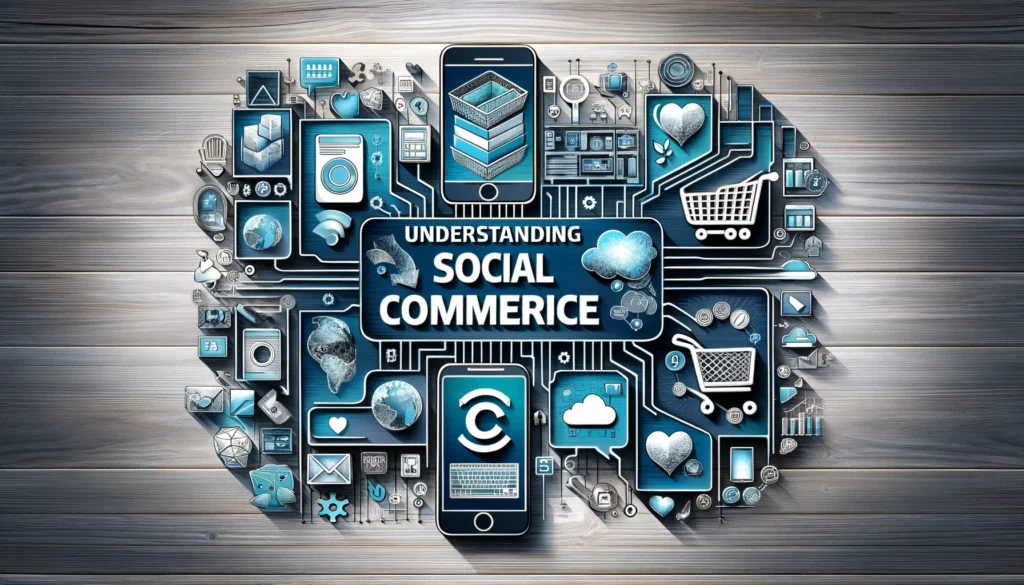In recent years, the phrase “Social Commerce Expansion” has become quite popular in the ever-changing world of e-commerce. This innovative idea combines social networking and online purchasing to create a seamless, dynamic, and interesting experience that benefits businesses and customers. You’ve come to the correct place if you’re curious about how to get involved in this growing industry or if you want to learn more about it. Online reviews are particularly significant in this context, shaping purchasing decisions and building trust among consumers.
Understanding Social Commerce
Before going on our adventure, let’s clarify what social commerce is. Social commerce is the fusion of e-commerce and social media, enabling customers to buy goods or services through their preferred social media channels. Put more, it turns your Facebook, TikTok, or Instagram account into an online store.
The Genesis of Social Commerce
Social Commerce Expansion did not occur overnight. It developed as a logical extension of e-commerce and social networking. Platforms like Instagram and Facebook launched “Shop Now” buttons, allowing users to purchase while scrolling through their feeds. As these capabilities gained popularity, businesses recognized the value of mixing social interaction and online purchases.

How Social Commerce Drives Sales
Social commerce revolutionizes how businesses connect with consumers, turning casual social media interactions into impactful sales opportunities. Let’s delve deeper into how this dynamic platform converts likes into purchases, leverages digital personalities’ influence, and harnesses real-time online review power to drive sales.
Turning Likes into Purchases
Whenever a user likes, comments on, or shares a product post on social media, it’s more than just a casual interaction; it’s a potential sales lead. Here’s how businesses capitalize on this:
Data-Driven Insights: Social media platforms provide businesses valuable data about user interactions. When a user shows interest in a product through likes or comments, companies can analyze this data to understand consumer preferences and behavior patterns.
Personalized Marketing: With these insights, businesses can create customized marketing strategies. For example, if you frequently like sports-related products, a company can target you with ads or posts featuring similar items, increasing the likelihood of a purchase.
Streamlined Shopping: Social commerce simplifies the path from discovery to purchase. Users can often buy products directly through social media platforms without visiting a separate website, making buying more convenient and immediate.
Influencer Impact
Influencers are modern-day celebrities on social media with the power to sway the purchasing decisions of their followers. Their role in social commerce is significant:
Trust and Credibility: Influencers build relationships with their audience, who often view their recommendations as trustworthy. An endorsement from a respected influencer can be more persuasive than traditional advertising.
Targeted Reach: Influencers often have a specific niche or audience demographic. Brands can collaborate with influencers whose followers match their target market, ensuring that the right people see their products.
Authentic Engagement: Influencers can showcase products in a real-life context, providing a more authentic and relatable view than standard advertising. This genuine representation can motivate followers to purchase, seeing the product as tried and tested.

Real-Time Feedback
Social media’s interactive nature enables businesses to receive rapid feedback on their products or campaigns:
Customer Insights: Comments, reviews and ratings, and direct messages provide instant feedback from consumers. Businesses can quickly gauge public reaction to their products, identifying strengths and improvement areas.
Agile Response: With real-time online review data, companies can swiftly address customer concerns or adapt their strategies. For example, if a new product receives negative review, a business can quickly investigate, respond to customer concerns, and make necessary adjustments.
Enhanced Customer Experience: This immediate interaction fosters a closer relationship between businesses and consumers. Customers feel heard and valued, which can build loyalty and encourage repeat purchases.

Strategies for Success in Social Commerce
Success in social commerce hinges on effectively engaging the audience and building a community around your brand. Here’s how businesses can enhance their social commerce strategies to drive more sales and foster customer loyalty.
Create Engaging Content
Strong content is the cornerstone of every effective social commerce campaign. It’s more important to tell your audience an engaging story than to highlight your products merely. Here’s how to differentiate your content:
Storytelling: Use your posts to tell a story that connects with your audience. This could be about your brand’s journey, the impact of your products, or stories from satisfied customers. Stories create emotional connections, making your brand more memorable and relatable.
Demonstrations and Tutorials: Display the functionality of your products. Removing doubt and promoting sales, as well as demonstrations and tutorials, assist prospective customers in understanding how your product functions and how it might benefit them.
Quality Visuals: Invest in high-quality photos and videos. Visual appeal is essential on social media, and professionally designed material may greatly impact how your business is regarded.
Interactive Content: Engage your audience with polls, quizzes, or Q&A sessions. In addition to boosting engagement, interactive content can provide you with important insights into the requirements and preferences of your audience.
Leverage User-Generated Content
User-generated content (UGC) is an effective instrument in the arsenal of social commerce techniques.
Build Trust: UGC serves as social proof, showing that real people use and enjoy your products. When potential buyers realize that other people have had good experiences with your brand, it might help to increase their trust.
Enhance Engagement: Encourage your customers to share their photos, videos, or product reviews. This provides additional content and fosters a community feeling as customers see their contributions valued and shared.
Authenticity: UGC is seen as more authentic than traditional marketing content. It provides a raw, unfiltered view of your products, which can be more persuasive than polished advertisements.

Utilize Social Ads
One powerful strategy for expanding your reach and focusing on potential clients is social media advertising:
Targeted Advertising: Social media sites include advanced features that let you target particular groups based on their interests, behaviors, or demographics. This ensures that your ads are shown to those most likely interested in your products.
Retargeting: Use retargeting advertisements to reach people who have interacted with your brand but have not purchased it. Reminding them of your products can often nudge them towards buying.
A/B Testing: Try various ad formats, messaging, and images to determine what appeals to your audience the most. By using A/B testing, you may improve your strategy and allocate more resources to the methods that produce the greatest outcomes.
Measurable Results: Rich data is provided by social media ads, enabling you to track the success of your campaigns in real-time. Use this data to adjust your strategies and improve ROI.
The Future of Social Commerce
The future of social commerce looks like a more integrated and natural retail environment where social engagement and online shopping coexist harmoniously. Future technological developments should bring even more sophisticated algorithms and immersive experiences—like virtual shops or augmented reality (AR) try-ons—to online shopping, making it as participatory and enjoyable as going to a real store. Due to this evolution, shopping will become more personalized and convenient since AI-driven suggestions based on a user’s social media activity will increase the relevancy and attractiveness of the products displayed.
For businesses, this means a change towards more dynamic and interactive consumer engagement tactics, in which recognizing and harnessing social media trends is essential. Consumers, on the other side, will benefit from more seamless and personalized purchasing experiences, allowing them to explore, research, and purchase products all within their preferred social networks. This integration will help create a more connected, engaging, and efficient marketplace where the convenience of finding and buying products meets the authenticity and trust of social media endorsements and conversations.
The Importance of Burstiness in Social Commerce Expansion
A vital component of the expansion of social commerce is burstiness. It describes the abrupt, frenzied activity that follows a hot issue or unique campaign. Exponential sales growth can result from this spike in user engagement. For instance, a brief promotion available only on social media platforms may spark a spike in sales and interaction.
Leveraging Perplexity for Success
In social commerce expansion, the element of surprise and curiosity, known as ambiguity, keeps consumers interested. This entails employing strategies like flash sales, unique content, and limited edition goods. Customers are intrigued to return for more since they never know what they might find next.
Conclusion
Social commerce is transforming the way we shop and sell. By understanding and embracing this change, businesses can unlock new opportunities to engage with customers and drive sales. It offers shoppers a fun and convenient way to discover and buy products. So, the next time you scroll through your social media feed, remember that your next favorite product might be a click away.
Online reviews are becoming increasingly important in this landscape, shaping purchasing decisions and providing valuable insights into product quality and customer satisfaction.







